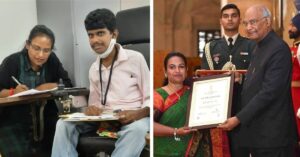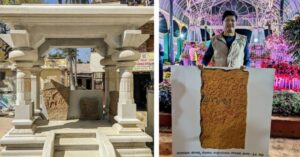Gandhi in Bengaluru: When a ‘Sabarmati Farmer’ Persuaded Women to Donate ‘Streedhan’
"Woman after woman took out one or two of their jewels adorning their bodies and threw them into the handkerchief that he was holding. One threw a diamond and gold ring, another a gold necklace, another a ruby and gold earring, and so on."

April 20th, 1927, was a warm summer day. Even as Mahatma Gandhi was leading Indians towards a non-violent resistance against the British, it had taken a severe toll on his own health. Gandhi suffered mild apoplexy, and his blood pressure was soaring. His physician had advised him to take rest, away from the challenging politics and indulge in a “little light reading.” Accepting the physician’s advice, he decided to visit Nandi Hills in Bengaluru and arrived at the Yeshwanthpur Railway Station that April morning.
Even with the doctor’s advise to rest, Gandhi was not one to let go of his principles. He walked all the way from the railway station to his guest house in Nandi hills for a 45-day period of rest and recuperation. With a diet of fresh goat milk, fruits and homemade bread and days spent just reading and writing letters, his health improved.
On June 15th, the freedom fighter was on the road again, this time to address his followers in Bengaluru who were eager to know how they could help him in his struggle for freedom.

Gandhi was close to Sir M Visvesvaraya, the Diwan of Mysore from 191 to 1919. Speaking to the Economic Times, Satish Mokshagundam, the grand-nephew of Sir MV said, “While Gandhi was all for rural development, Sir MV promoted industrialisation. The latter advised the Mahatma against prolonging the non-cooperation movement because he felt that it would lead to unionism and more strikes.”
In the first week of July that year, Gandhi was staying at the Kumara Krupa guesthouse in Bengaluru. He inaugurated a khadi exhibition on 3rd July, promoting homespun fabric over readymade garments in the market.
His promotion of “swadeshi” goods was a way to teach the “semi-starved millions of India” how they could uplift themselves from dire poverty. Later, he visited IISC and the Imperial Institute for Animal Husbandry & Dairying (now NDRI) to undergo training on cattle management.
Here, he signed the visitor’s book as “a farmer from Sabarmati,” and promised to “put into practice what I have learnt in Bangalore.”

However, it is the event at the Mahila Seva Samaja in Basavanagudi, which genuinely reveals how Gandhi had won the hearts of millions of Indians, who were ready to do anything that he asked for, for the sake of India’s country.
At that time, among other initiatives, Gandhi efforts to emancipate SC/ST communities to give them a respected platform in the freedom struggle were underway. Even as he was in talks with the British authorities about India’s future and uniting his followers to fight a non-violent fight against the foreign rulers, he also needed to gather funds for these efforts.
This is where those people who could not participate personally were urged to help financially.
You may also like: A PM, a Pickle Tree & the Tale of India’s First State-Owned 5 Star Hotel!
Rajeshwari Chatterjee, a professor in IISC, has written about the event at the Mahila Seva Samaja.
“The women and the school children gathered in a big hall, all seated on the floor, to greet him. In another big room, some women were seated on the floor, spinning the charkha. The school children were taught to sing the song ‘Vaishnava Janato,’ which was his favourite song of prayer. At the end of his speech, he asked them how they could help him in his work.”
Gandhi asked them for monetary help to support his Harijan Fun. The women responded by saying that they did not have any money.
This was when he urged them to give up one thing that is very personal and precious to married women—the “streedhan.”

At the time of their wedding, women are given pieces of jewellery by their parents. This “streedhan” belongs only to the woman. No one, including her husband, is allowed to use or sell it.
Gandhi’s request was not turned down. “Woman after woman took out one or two of their jewels adorning their bodies and threw them into the handkerchief that he was holding. One threw a diamond and gold ring, another a gold necklace, another a ruby and gold earring, and so on.
You may also like: When Iron Man Built The Steel Frame: Why Sardar Patel Is The ‘Patron Saint’ of the IAS
Following this, Gandhi “thanked the women of Bangalore for responding to his request, and gracefully left the gathering with his followers,” writes Chatterjee.
Kamalabai Chandur (Rajamma), Subamma and Gowramma, freedom fighters of the old Mysore State, were the first to contribute all their ornaments and this inspired others to do the same. This is how, almost 91 years ago, the Mahatma managed to raise Rs 90,000 worth of jewellery.
(Edited by Gayatri Mishra)
Like this story? Or have something to share?
Write to us: [email protected]
Connect with us on Facebook and Twitter.
This story made me
- 97
- 121
- 89
- 167
Tell Us More
We bring stories straight from the heart of India, to inspire millions and create a wave of impact. Our positive movement is growing bigger everyday, and we would love for you to join it.
Please contribute whatever you can, every little penny helps our team in bringing you more stories that support dreams and spread hope.



















